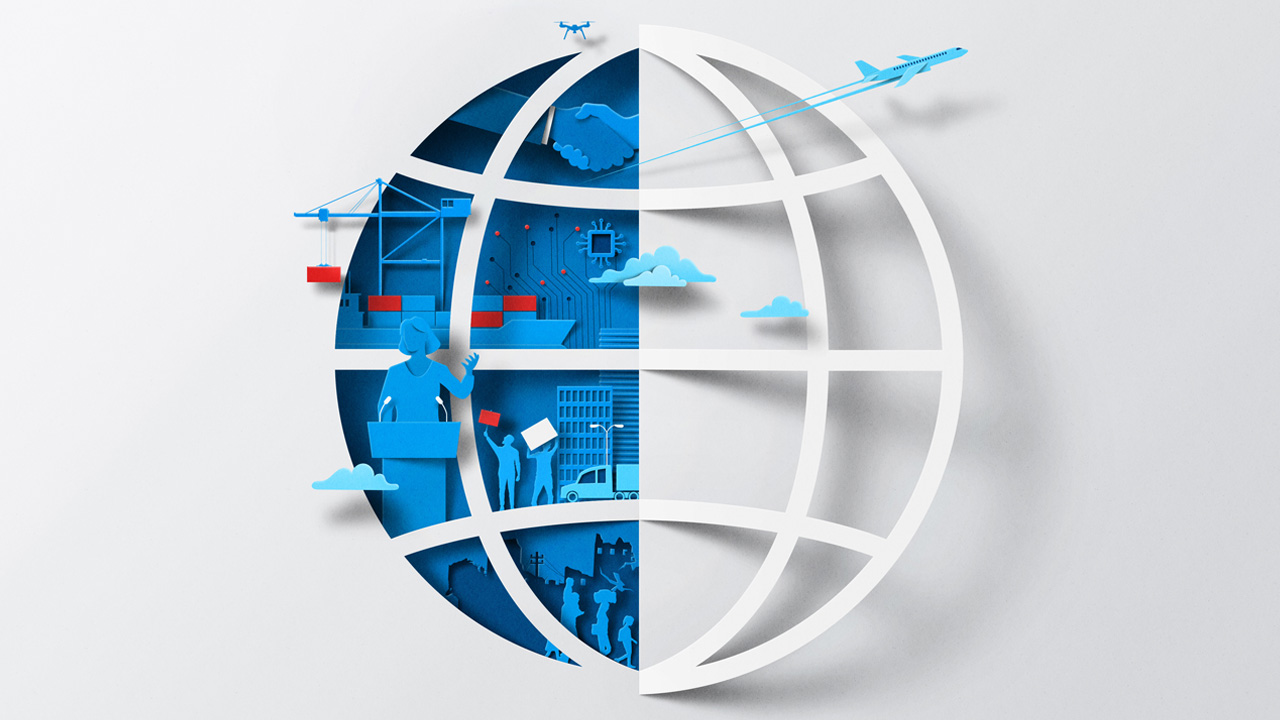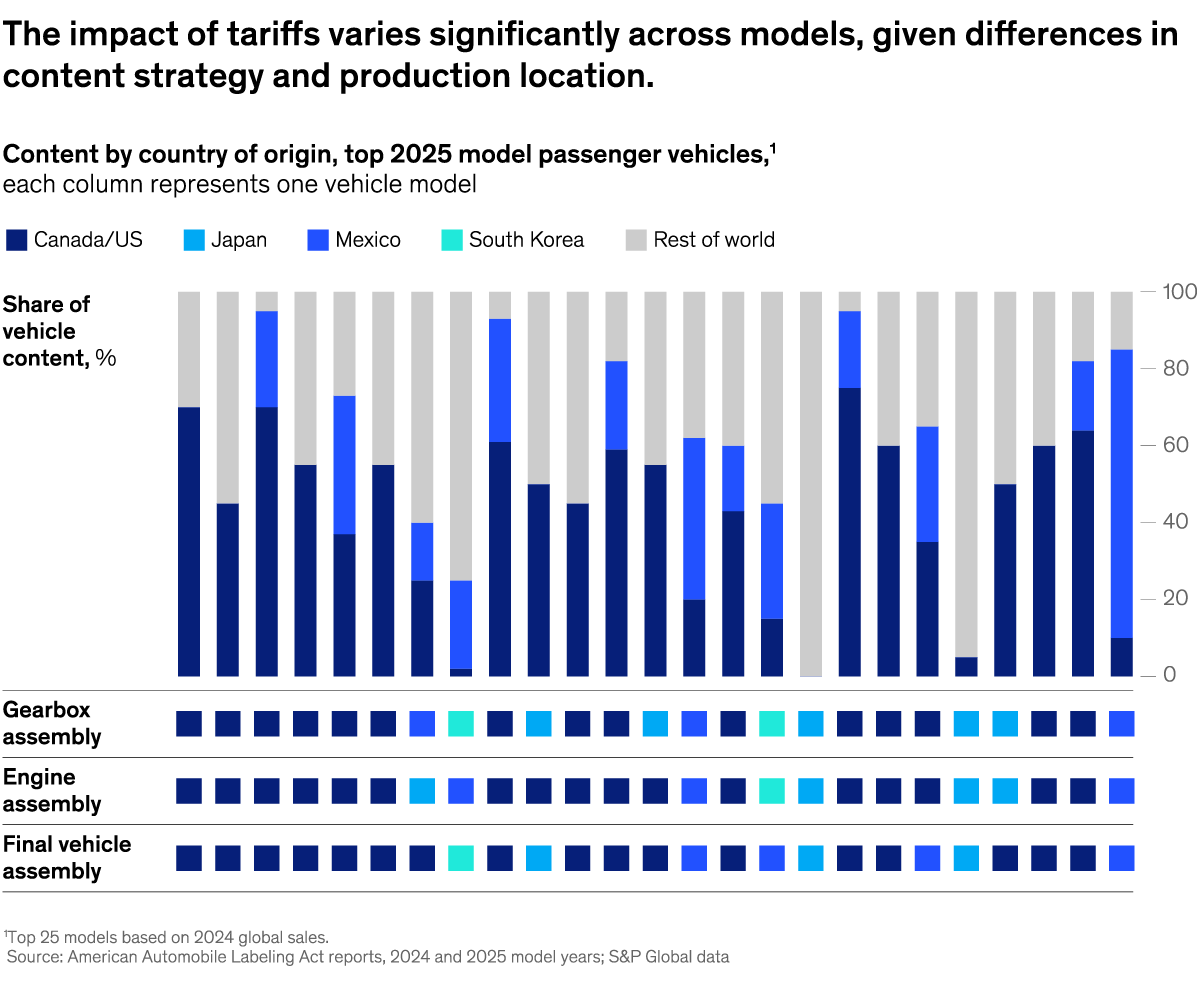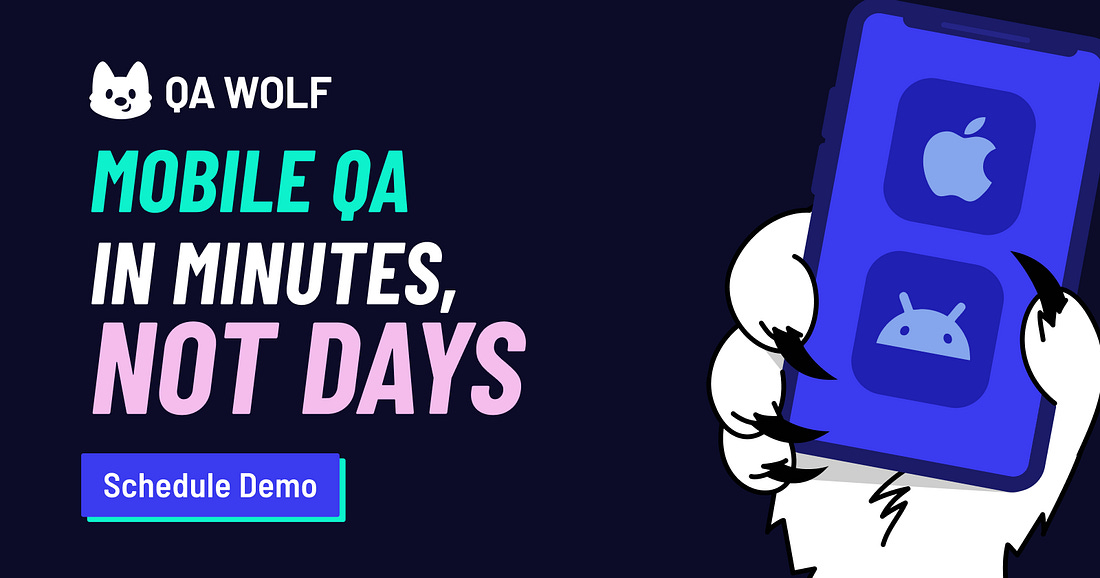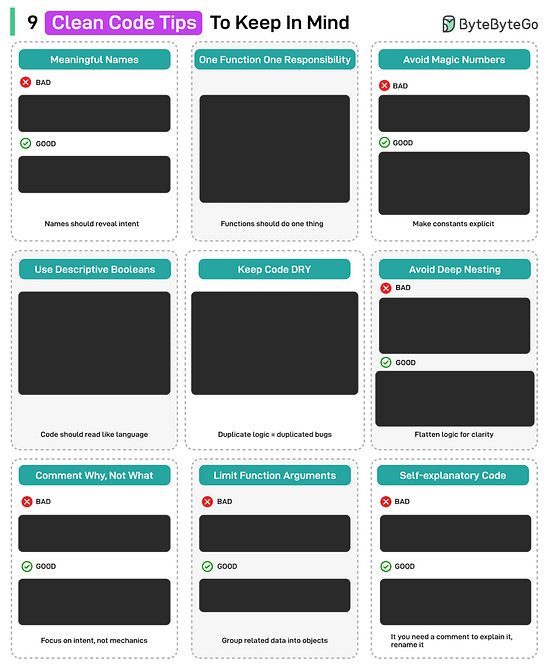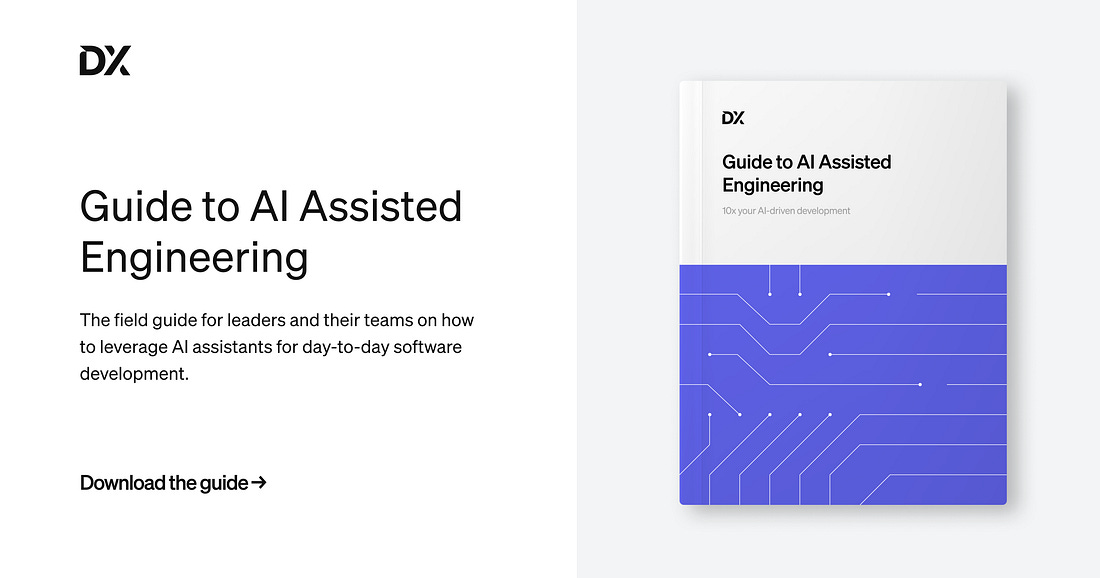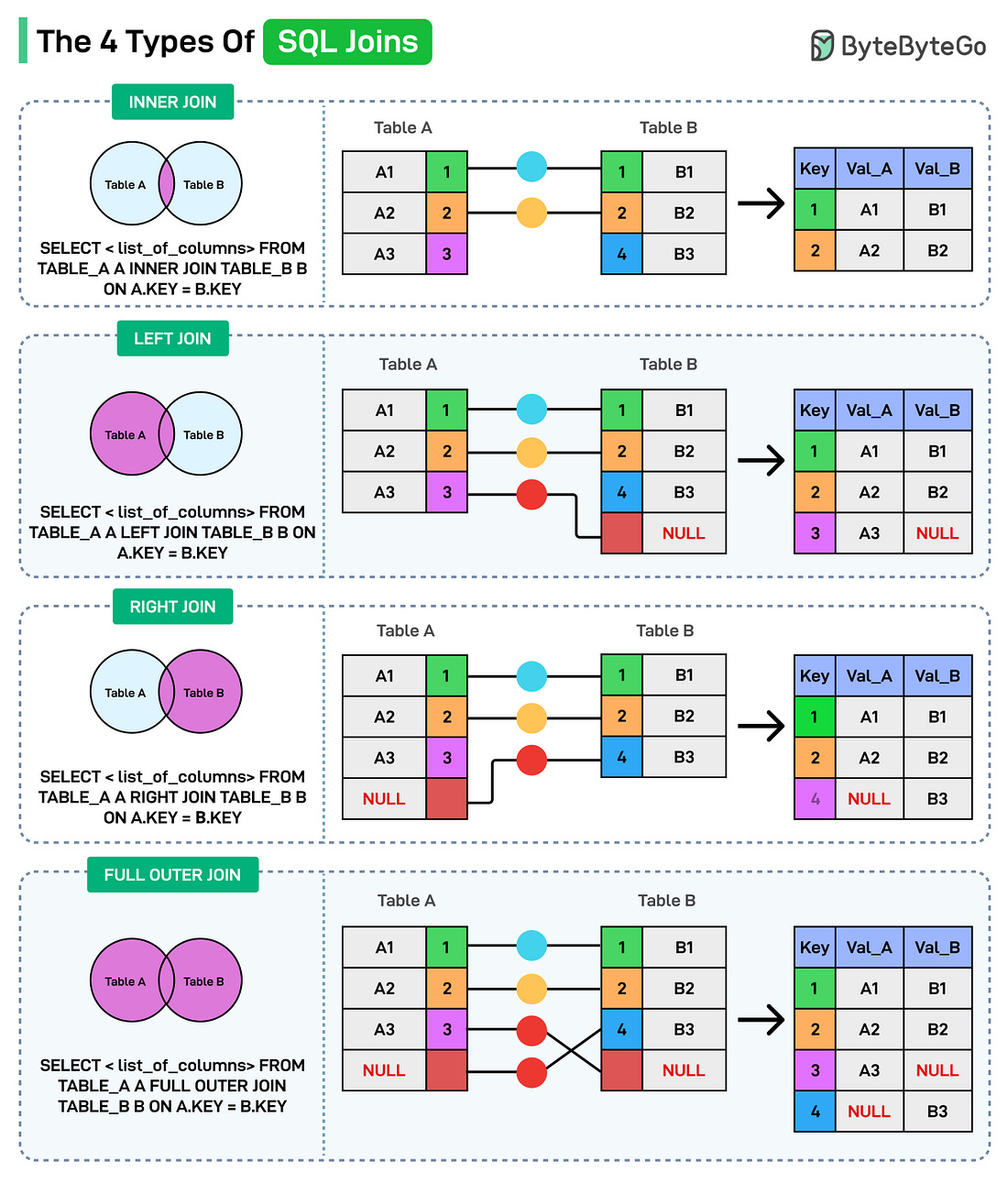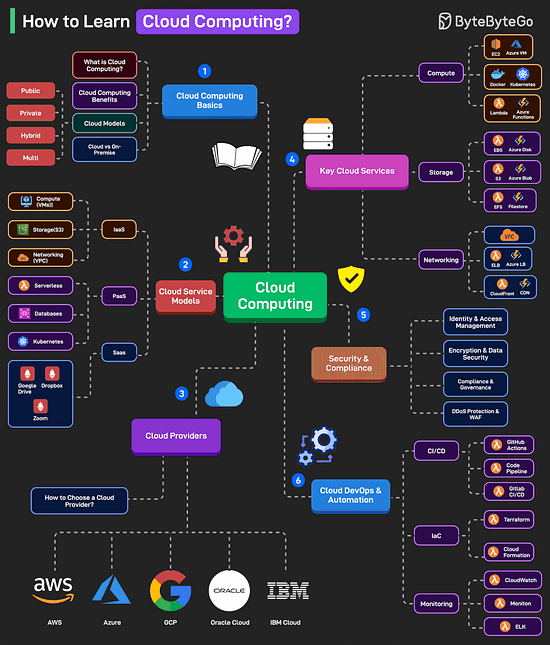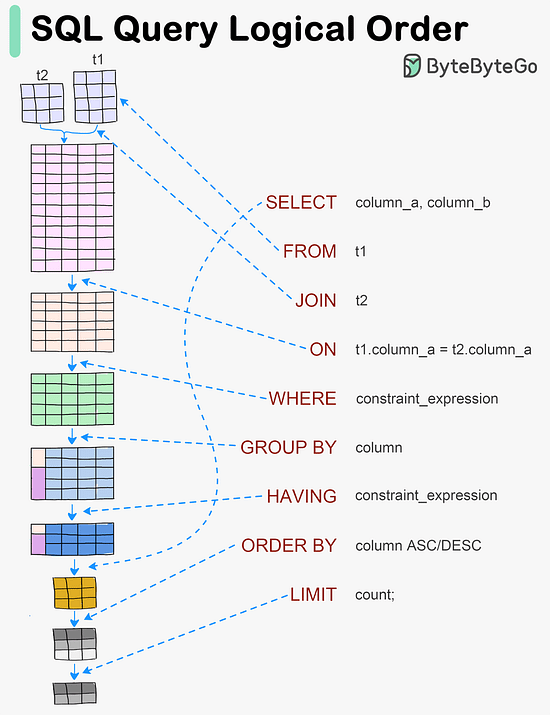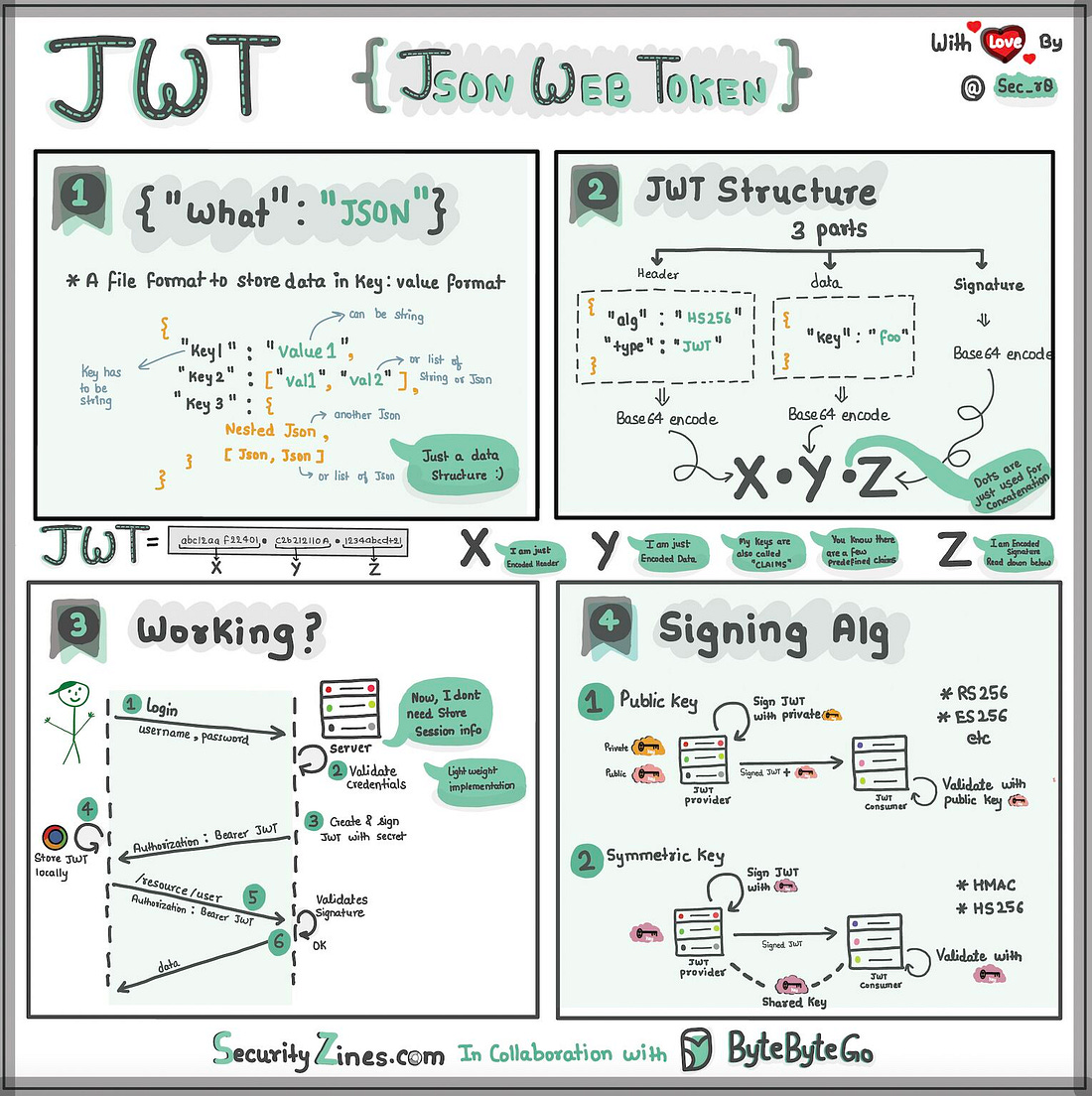Archives
- By thread 5237
-
By date
- June 2021 10
- July 2021 6
- August 2021 20
- September 2021 21
- October 2021 48
- November 2021 40
- December 2021 23
- January 2022 46
- February 2022 80
- March 2022 109
- April 2022 100
- May 2022 97
- June 2022 105
- July 2022 82
- August 2022 95
- September 2022 103
- October 2022 117
- November 2022 115
- December 2022 102
- January 2023 88
- February 2023 90
- March 2023 116
- April 2023 97
- May 2023 159
- June 2023 145
- July 2023 120
- August 2023 90
- September 2023 102
- October 2023 106
- November 2023 100
- December 2023 74
- January 2024 75
- February 2024 75
- March 2024 78
- April 2024 74
- May 2024 108
- June 2024 98
- July 2024 116
- August 2024 134
- September 2024 130
- October 2024 141
- November 2024 171
- December 2024 115
- January 2025 216
- February 2025 140
- March 2025 220
- April 2025 233
- May 2025 239
- June 2025 303
- July 2025 49
-
EMB SPOT - Aufnäher zu einem aufregenden Preis


STICKEREI
AUFNÄHER
Präzision, Leidenschaft und perfekte Stiche
EMB Spot bietet Ihnen ein exklusives Angebot für hochwertige Aufnäher – stärken Sie Ihre Marke und hinterlassen Sie einen bleibenden Eindruck!
Sublimations Aufnäher
Mindestens 50 Aufnäher für €100
Wir bieten
• Wärmeadhäsive Rückseite
• Klettverschluss-Rückseite (€0,25/Patch)
• Abziehbare Rückseite
• Zum Nähen auf der Rückseite
Gewebte Aufnäher
Mindestens 50 Aufnäher für €100
Wir bieten
• Wärmeadhäsive Rückseite
• Klettverschluss-Rückseite (€0,25/Patch)
• Abziehbare Rückseite
• Zum Nähen auf der Rückseite
Stickerei Aufnäher
Mindestens 50 Aufnäher für €130
Wir bieten
• Wärmeadhäsive Rückseite
• Klettverschluss-Rückseite (€0,25/Patch)
• Abziehbare Rückseite
• Zum Nähen auf der Rückseite
PVC-Aufnäher
Mindestens 50 Aufnäher für €130
Wir bieten
• Wärmeadhäsive Rückseite
• Klettverschluss-Rückseite (€0,25/Patch)
• Abziehbare Rückseite
• Zum Nähen auf der RückseiteLass uns anfangen.
Wir nutzen eine Vielzahl von Formaten, die mit Stickmaschinen kompatibel sind, und stellen sicher, dass Ihr Design jedes Mal perfekt aussieht.

www.embspot.com
by mary@embspot.com - 02:29 - 12 May 2025 -
Opportunities for America at 250 and beyond: A leader’s guide
Leading Off
Unpack the uncertainty
by "McKinsey Leading Off" <publishing@email.mckinsey.com> - 04:54 - 12 May 2025 -
High - Performance Wiring Harness Solutions for Industrial Robotic Arms
Dear Info,
We are excited to introduce our latest innovation in the field of industrial wiring harnesses,
specifically designed to meet the rigorous demands of industrial robotic arm applications.Our wiring harnesses are engineered with precision and built to last,ensuring seamless operation and maximum efficiency for your robotic systems.

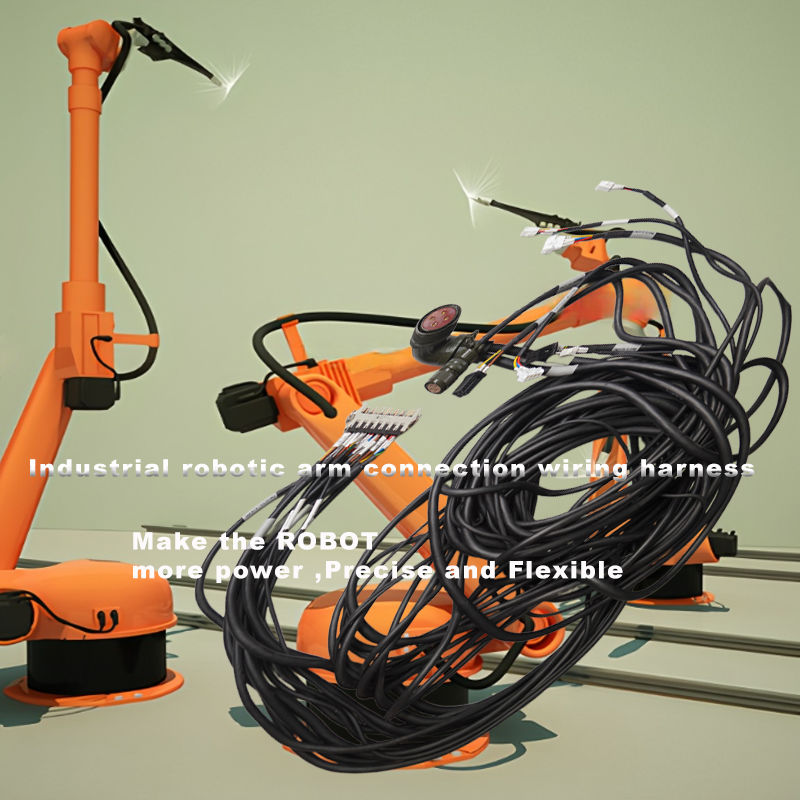
1. Superior Connectors for Reliable Connectivity
Weidmüller frame group size 8, frame CR 24/7 modules connector:
This high - quality connector from Weidmüller is known for its robustness and reliability.
With a frame group size of 8 and CR 24/7 modules, it can handle continuous operation in demanding industrial environments.
It provides a secure and stable connection, minimizing the risk of signal loss or disconnection during the operation of your robotic arms.MS MIL - C - 5015G waterproof connector:
In industrial settings where exposure to moisture is a concern, our use of the MS MIL - C - 5015G waterproof connector is a game - changer.
It offers excellent protection against water, dust, and other environmental factors,
ensuring that your wiring harness remains functional even in harsh conditions.
This connector is compliant with military - grade standards, guaranteeing its durability and performance.Line - to - line DL5200 double - row connector:
Our DL5200 double - row connector features a PBT UL94 - V0(2) socket and phosphor bronze gold - plated terminals.
The PBT material of the socket is highly flame - retardant, meeting the UL94 - V0(2) standard, which is crucial for safety in industrial applications.
The phosphor bronze gold - plated terminals provide low - resistance connections, enhancing signal transmission quality and durability.Ordinary nylon socket with phosphor bronze terminal connector:
We also include ordinary nylon socket connectors with phosphor bronze terminals in our wiring harnesses.
These connectors offer a cost - effective yet reliable connection option,
suitable for various components within the robotic arm system.
The nylon socket provides good insulation, while the phosphor bronze terminals ensure stable electrical conductivity.2. High - Quality Drag Chain Cables
Multiple Cable Sizes and Lengths:
Our wiring harnesses incorporate drag chain cables with wire gauges ranging from 14 - 26AWG and lengths varying from 6 - 10 meters.
This wide range of sizes and lengths allows for flexible customization to fit different robotic arm configurations.
Whether you have a small - scale or large - scale robotic arm system, we can provide the right cable solution.Exceptional Construction:
The drag chain cables are made from stranded tinned soft copper wire conductors, which offer excellent flexibility and conductivity.
The PVC insulation provides reliable electrical insulation, while the filling strips, braids, and tapes are carefully stranded together to enhance the cable's overall strength and durability.Long - Lasting Performance:
We understand the importance of durability in industrial applications. That's why our drag chain cables are tested to have a lifespan of greater than or equal to 10000000 cycles.
They can withstand the continuous bending and movement associated with robotic arm operation.
Additionally, they have a wide operating temperature range of - 10℃ to + 80℃ and a rated voltage of 300V, making them suitable for a variety of industrial environments.
By choosing our industrial robotic arm wiring harnesses, you are investing in a product that combines top - of - the - line components, advanced manufacturing techniques, and rigorous quality control.We are committed to providing you with a wiring solution that not only meets but exceeds your expectations.
We would be delighted to discuss your specific requirements further and provide you with a customized quote.
Thank you for your time and consideration.
We look forward to the opportunity to collaborate with you.
Please feel free to contact us at
Best regards,
Ms.JoJo +86 13068288569(WeChat ID)
www.shx-wire.com
www.shx-harness.com
深圳市盛和新电子有限公司(总部)
Shenzhen Shenghexin Electronics Co.,Ltd(Headquarters)
惠州九为电子有限公司(分公司)
Huizhon Jiuwei Electronics Co.,Ltd(Subsidiary)
TEL:+86 752-3189959
E-mail:sales@shx-harness.com/sales1@shx-harness.com
by "Stellfox Jandrin" <jandrinstellfox@gmail.com> - 01:42 - 12 May 2025 -
Six ways US state and local governments can work better
On McKinsey Perspectives
Tackling budget cuts, workforce changes, and rising expectations Brought to you by Alex Panas, global leader of industries, & Axel Karlsson, global leader of functional practices and growth platforms
Welcome to the latest edition of Only McKinsey Perspectives. We hope you find our insights useful. Let us know what you think at Alex_Panas@McKinsey.com and Axel_Karlsson@McKinsey.com.
—Alex and Axel
•
Opportunities to innovate. Today’s state and local governments are under pressure to reduce costs, modernize outdated systems, and adapt to shifting workforce demographics—even as many of them have already confronted the effects of the COVID-19 pandemic and stimulus funding losses. As McKinsey Senior Partner David Nuzum and coauthors explain, these challenges also give public sector leaders a unique opportunity to innovate and improve outcomes.
•
Achieving high performance. When budgets shrink, governments often make hasty reductions that disrupt important services, only to have to rebuild their teams after the crisis subsides. To avoid this sort of rebound, state and local government leaders could consider six key actions—including stopping nonessential work, redesigning processes, and integrating digital technologies—to create lasting improvements. Explore our new series, America at 250, for more ideas ahead of the nation’s 250th birthday.
—Edited by Belinda Yu, editor, Atlanta
This email contains information about McKinsey's research, insights, services, or events. By opening our emails or clicking on links, you agree to our use of cookies and web tracking technology. For more information on how we use and protect your information, please review our privacy policy.
You received this email because you subscribed to the Only McKinsey Perspectives newsletter, formerly known as Only McKinsey.
Copyright © 2025 | McKinsey & Company, 3 World Trade Center, 175 Greenwich Street, New York, NY 10007
by "Only McKinsey Perspectives" <publishing@email.mckinsey.com> - 01:17 - 12 May 2025 -
Improve your efficiency with our premium low voltage electrical solutions

We are a specialized automation factory focusing on low-voltage electrical solutions, providing high-quality MCCB, ACB, and MCB products.
We provide MCBs with various breaking capacities such as 6kA, 10kA, and 15kA to meet the needs of different application scenarios.
6kA MCB:

10kA MCB:

15kA MCB:





Nicy Qian
Director at W9-Group
+8615906878798
www.w9-group.com
nicy@w9-group.com
No. 36, Punan Second Road, Yueqing Economic Development Zone, Wenzhou, Zhejiang, China
by "sales54" <sales54@wl-ele.com> - 08:23 - 11 May 2025 -
Rapier loom: the future choice of weaving industry
Dear Info,
Hello!
My name is Kevin and I represent Zhejiang Haisen Textile Machinery Technology Co., Ltd, a prominent manufacturer of high-speed rapier looms in China.
Our high-speed rapier looms are engineered to deliver excellent results for a variety of fabrics, such as cotton fabrics, linen fabrics, wool fabrics, silk fabrics, chemical fiber fabrics, glass fiber fabrics, metal fiber denim fabrics, shirt fabrics, and suit fabrics, curtain fabrics, sofa fabrics, and wall fabrics.
We have attached photos of our high-speed rapier looms for your reference.
We would be delighted to receive your inquiries and start a conversation about how our products can meet your fabric production requirements.

Thank you and best wishes,
Kevin
Zhejiang Haisen Textile Machinery Technology Co., Ltd.
Website address: www.chinahaisen.com
by "Michael" <Michael@cnhaisen.com> - 07:21 - 11 May 2025 -
Re: Cost?
Hi,Hope everything is awesome with you!I found a few errors on your website. I would like to send you a quotation of your website. It will show you exactly what needs to be done to improve the rankings.Is it ok if I send you a quote including an audit report?
SEO ConsultantUSA
If you would prefer not receiving our emails, please click here to unsubscribe.
by "Lusia Zeb" <lusia80012@hotmail.com> - 06:25 - 11 May 2025 -
Mr. Jalapeno Food Truck Great Eats Award
Hello,
My name is Chris Allen. I'm the Regional Director for the 2025 Great Eats Award.
We're happy to inform you that Mr. Jalapeno Food Truck has been selected as a recipient of the Great Eats Award in the Pittsburg area, recognizing your outstanding achievements in culinary excellence.
The Great Eats Award is a highly selective honor reserved only for chefs and restaurants demonstrating exceptional quality, creativity, and dedication to elevating the customer experience. This accolade is awarded to restaurants who go above and beyond to make a lasting impression on their customers and stand out as community leaders.
Your commitment to excellence has not gone unnoticed, and we are proud to recognize your commitment to exceptional dining experiences.
Click here for information on claiming your Great Eats Award.
To claim your award and learn more about this recognition, please visit GreatEatsAward.com and use your unique Business Code: XBZLLBYBRBU.
If you have any questions or need assistance, do not hesitate to reply to this email or reach out to us at 1-866-627-4527.
Once again, congratulations on this remarkable achievement. Your dedication to excellence sets you apart as truly special in the culinary world.
Warm regards,Chris Allen
Regional Director
Great Eats Award
1681 Blue Rock St
Cincinnati, OH 45223
by "Chris Allen" <chris@greateatsaward.com> - 05:59 - 11 May 2025 -
High Impact Transformational Leadership Skills For Managers & Leaders Using NLP (16 & 17 June 2025)
FACE TO FACE PUBLIC PROGRAM
HIGH IMPACT TRANSFORMATIONAL LEADERSHIP SKILLS
FOR MANAGERS & LEADERS USING NLP
(ACHIEVING THE BREAK-THROUGH IN THE WORKPLACE THAT MAKES THE DIFFERENCE IN YOUR TEAM PERFORMANCE)
Venue : AC Hotel by Marriott, Penang (SBL Khas / HRD Corp Claimable Course)
Date : 16 Jun 2024 (Mon) | 9am – 5pm By Daniel
17 Jun 2024 (Tue) | 9am – 5pm
.
.
OBJECTIVE:
Many team leaders and managers are looking forward to inspire visible change in themselves and their workforce but without much success. This powerful transformational and experiential result-oriented workshop will ignite your passion for work & life; and inspire you as well as show you how to inspire your staff and culture a dynamic team to outdo current performance levels to attain peak performance.
In this workshop, the participants will unleash the leadership qualities in your executives and managers that they may see beyond the norm or current possibilities. And it will reinforce or remind your senior team about the importance of living their dreams, instead of “living in their dreams”, and results they want in their life. To develop high impact team leadership skills, influencing skills; and unleash intrinsic creativity and innovation that will ensure progress, achieve sustainable change and ensure high business performance in face of global economic and financial crisis.
This workshop incorporates tools and ideas used in Neuro-Linguistic Programming (NLP) that makes a real difference by enhancing and developing your skills to transform the mindset and achieve significant results. By understanding how to use all your senses, using different styles and levels of language patterns and re-writing your thinking process you can achieve the break-through that makes the difference as a transformational leader in the workplace.
LEARNING METHODS USED:
In this fun-filled highly experiential training, the training facilitator adopts a coaching and facilitative approach. It is very important to engage the participants in reviewing their own outcomes.
The fun-filled activities are designed to illustrate key issues that the participants are facing in achieving excellence and greater performance as a change leader at work by using NLP tools to create illustrations, demonstrations and activities such as role plays, VAK & Mind exercises, mind games and group discussions.
New skills will be acquired via mind programming methods using practical NLP.
EXPECTED OUTCOMES:
After the workshop, you will be or have :
- A clear Visionary Leader that sees beyond norm
- Displaying powerful self leadership, positive attitudes for life and work
- Reading People Skills that all Leaders must have
- A Superb People Influencer
- Creating a Dynamic Team Culture that impacts to the lives of your team at work
- A Highly Creative and Innovative Transformational leader
- Higher staff morale, peak performance, productivity and profitability (3 Ps)
WHO SHOULD ATTEND:
All Senior Managers, HODs, Managers, Executives and Team Leaders in your company
OUTLINE OF WORKSHOP
DAY 1
MODULE ONE: SELF LEADERSHIP
Brief Introduction of NLP
- Definition Of NLP
- The Study Of Human Excellence in leading self
- NLP Thinking & Communication Model
- The Ultimate Success Formula for Top Achievers
It’s All in the Brain – Perceptual Positioning
- How to use our left and right side of your brain to achieve its full potential
- Why is NLP necessary to enhance your Team Leadership Skills
- Experiential Learning : Self Leadership precedes Transformational Leadership
- “The Map is not the Territory”
- Activity : Perceptual Positioning - Learn how to view issues from perceptions of others & Leading perceptions
MODULE TWO: THE MINDSET OF HIGH IMPACT EMOTIONALLY INTELLIGENT LEADERS
- Mindset, values and habits of a great leaders
- What is the Difference between EQ and IQ
- Understanding Why EQ & EI is important
- EQ Self Assessment of Personality Types
- How to effectively lead each Personality Type
- Experiential Video Learning : High Impact Visualization Exercises for Leaders
- VAK Exercises : Anchoring Powerful EI Leadership Values
MODULE THREE: BEING A SUPERB INFLUENCER IN YOUR ORGANISATION
- Reading People accurately
- Know instantly if they are truthful
- Experiential Learning : Powerful Body Language
- Exercises : Covert & Overt Influencing Techniques
- Exercise : Highly Effective Strategy in Gaining Agreement & Commitment
- Activity : Meta Modeling Technique – where others can’t say ‘NO’
DAY 2
MODULE FOUR: BEING A SUPERB TEAM LEADER – CULTURING TEAM VALUES
- Understanding Team Dynamics & Synergy
- Characteristics of Group Dynamics
- Aligning Team forces ‘For’ instead of ‘Against’ You
- 5 Stages of Team Development
- Team member roles
- Exercise: ‘Traffic-Jam’ Synergy Game – intellectual team leadership
- Programming : Culturing Team Leadership Values
MODULE FIVE: SEEING BEYOND NORM AND CURRENT POSSIBILITIES
- Breaking our Bonds – Current States
- Beyond Thinking – Breaking self limiting beliefs
- Moving from Possibilities to Impossibilities
- Video – Champions Beyond Norms
- Up Lifting the Company’s Business to the next level
- Exercise : Beyond Brainstorming into our Impossibilities
- Activity : Mind Mapping Impossibilities into Reality
MODULE SIX: LEADERSHIP TRANSFORMATION WITH INNOVATION
- Innovation and Change Management
- Developing Creative Break-through in a Challenging Market
- Implementing and Freezing Change
- Exercise : Reverse Brainstorming - Highly Creative Problem Solving
- People or Product or Process (Service) Innovation?
- Activity : Star Busting for Innovative Breakthrough
- Action Planning : Leadership Transformation
** Certificate of attendance will be awarded for those who completed the course
ABOUT THE FACILITATOR
Daniel
- Member of Malaysian Institute of Management
- Certified Professional Trainer, MIM
- MBA (General) University of Hull, UK
- Council of Engineering Institutions (UK) Part I & II
- Associate Member of Institute of Electrical Engineers, UK
- ISO Standardization Internal Auditor
- NLP Master Trainer Certification, NFNLP US
- Certified Master Conversational Hypnotherapist, IAPCH US
- Certified Specialist in Neuro-Hypnotic Repatterning, SNLP US
- Diploma in International Sound Therapy, IAST Alicante, Spain
Daniel, an International Master NLP Trainer, has more than 32 years experience in the corporate world, out of which 22 years has been spent on coaching and training: teaching Management & Leadership Skills, Experimental Mindset Transformation, Creative Problem Solving & Stress Management, Communication & Interpersonal Skills, Coaching & Negotiation skills - training Companies and individuals on Sales, Consulting, Neuro-Linguistic Programming (NLP) and Sub-conscious learning skills. And in the process, continually coaching and motivating all his students, staffs and associates to learn, grow and expand their personal paradigms and horizons.
He also has extensive management and leadership experience in Operations, Supply Chain, Purchasing, Contract Management, Sales, Projects, Engineering and Facility Management. In his last major corporate appointment as General Manager of GEC (UK), where he was fully in-charge of both local and regional operations of his Division, he successfully managed over 15 different products and systems, with an annual turnover of RM60 million, for both the domestic and regional markets. He is well verse in Operations Management and fully understand each process in the supply chain that contributes to excellence in service/product delivery.
He is an engineer by profession and has completed his professional engineering degree, the Council of Engineering Institutions, UK., Part I & II within 2 years, one year short of the normal period of 3 years. As such he was awarded: Excellent Performance Award in the Professional degree. Positions held in the various multi-national corporate companies include from a young installation/service engineer to department manager & general manager of a leading MNC. Currently, he is a Certified Professional Trainer with the Malaysian Institute of Management (MIM) and Cambridge ICT. He is a Certified Master NLP Trainer of the National Federation of Neuro-Linguistic Psychology, USA and also a Certified Master Conversational Hypnotherapist of the International Association of Professional Conversational Hypnotherapist, USA.
He specializes in coaching CEOs, senior managers and entrepreneurs in highly sought-after skills in areas of people management, creative and innovative skills in leading organizations. His passions are in the study and application of the latest psychologies, mental tools and techniques in reading and handling people; especially in areas of EQ, Effective Communication & Negotiation skills, Management & Leadership Skills and Sales, applying Neuro-linguistic Programming and Subconscious Learning to accelerate adult learning.
Daniel recognizes the great potential within each individual participant and he believes in making a difference in their learning through his personalised, demonstrative, practical and dynamic approach to make training an enjoyable and invaluable experience. His passion for training stems from his innate desire to empower all those individuals who are keen to seek knowledge, higher consciousness and self-improvement; so that they can be the person they need to be to have what they want.
(SBL KHAS / HRD Corp Claimable Course)
TRAINING FEE
2 days Face-to-Face Public Program
RM 2,250.00/pax
(excluded 8% SST)
Group Registration: Register 3 participants from the same organization, the 4th participant is FREE.
(Buy 3 Get 1 Free) if Register before 6 Jun 2025. Please act fast to grab your favourite training program!We hope you find it informative and interesting and we look
forward to seeing you soon.
Please act fast to grab your favorite training program! Please call 012-588 2728
or email to pearl-otc@outlook.com
Do forward this email to all your friends and colleagues who might be interested to attend these programs
If you would like to unsubscribe from our email list at any time, please simply reply to the e-mail and type
Unsubscribe in the subject area. We will remove your name from the list and you will not receive any additional e-mail
Thanks
Regards
Pearl
by "sump@otcmsb.com.my" <sump@otcmsb.com.my> - 09:31 - 10 May 2025 -
Opportunity to Partner with Us for Sodium Hydroxide Supply
Dear Info,
I hope this message finds you well. My name is Enomoto Waganer, and I am reaching out to introduce you to an exciting opportunity in the supply of Sodium Hydroxide (NaOH), commonly known as caustic soda. As one of the essential chemicals in various industries, Sodium Hydroxide has a wide range of applications, including chemical production, water treatment, food processing, and more.
Our company,Tianjin Xintaige Technology Development Co., Ltd. is a reputable manufacturer of high-quality Sodium Hydroxide, and we are looking to expand our distribution network. We understand the importance of having reliable partners who can deliver exceptional products to meet the needs of diverse customers.
Here are some key advantages of partnering with us:
1. **High Purity and Quality**: Our Sodium Hydroxide is produced under stringent quality control standards, ensuring high purity levels that meet or exceed industry specifications.
2. **Competitive Pricing**: We offer competitive pricing structures that can help you maximize your profit margins while providing value to your customers.
3. **Flexible Packaging Options**: We provide Sodium Hydroxide in a variety of packaging options, catering to different customer needs, whether in bulk or smaller quantities.
4. **Reliable Supply**: With our efficient production and logistics capabilities, we guarantee timely deliveries to ensure your supply chain remains uninterrupted.
5. **Strong Customer Support**: Our dedicated team is always ready to assist you with any inquiries or technical support you may require.
We believe that a partnership with your esteemed company would be mutually beneficial and enable us to serve our customers better. I would love to discuss this opportunity further and explore how we can work together to enhance your product offerings and expand your market reach.
Please let me know a convenient time for you to have a conversation or if you need any more information. I look forward to the possibility of collaborating with you.
Best regards,Enomoto Waganer
by "Enomoto Waganer" <waganerenomoto@gmail.com> - 06:28 - 10 May 2025 -
Large-Scale, High-Speed 3D Printing: Dual Extruders, 300mm/s, Full Build Volume
Hi Info,
I hope you’re doing well.
I’m Chrity, Channel Sales Manager at MINGDA 3D, a trusted 3D printer manufacturer with over 12 years of experience.
I’d like to introduce our high-speed, dual-extruder 3D printers: MD-600D (600x600x600mm) and MD-1000D (1000x1000x1000mm).
Key Features:5X Faster Printing: Up to 300mm/s.
Dual Extruders: Multi-color and multi-material printing (PLA, ABS, TPU, PETG, Carbon Fiber, and more).
High-Temperature 350°C Extruders: For advanced composites.
Full-Size Printing: 100% build area.
Remote Monitoring: Camera & Wi-Fi control.
Easy Setup: Quick auto bed leveling & camera calibration.
Silent Printing: Closed-loop motors for smooth operation.
The MD-600D and MD-1000D are perfect for rapid prototyping and end-use parts, offering larger builds, faster speeds, and material flexibility.
Let me know if you’d like more details or have any questions.
by "Chrity" <Chrity@3dprintermingda.com> - 06:19 - 10 May 2025 -
The week in charts
The Week in Charts
Tariff impacts, economic uncertainty, and more Share these insights
Did you enjoy this newsletter? Forward it to colleagues and friends so they can subscribe too. Was this issue forwarded to you? Sign up for it and sample our 40+ other free email subscriptions here.
This email contains information about McKinsey's research, insights, services, or events. By opening our emails or clicking on links, you agree to our use of cookies and web tracking technology. For more information on how we use and protect your information, please review our privacy policy.
You received this email because you subscribed to The Week in Charts newsletter.
Copyright © 2025 | McKinsey & Company, 3 World Trade Center, 175 Greenwich Street, New York, NY 10007
by "McKinsey Week in Charts" <publishing@email.mckinsey.com> - 03:23 - 10 May 2025 -
EP162: 9 Clean Code Principles To Keep In Mind
EP162: 9 Clean Code Principles To Keep In Mind
Meaningful Names: Name variables and functions to reveal their purpose, not just their value.͏ ͏ ͏ ͏ ͏ ͏ ͏ ͏ ͏ ͏ ͏ ͏ ͏ ͏ ͏ ͏ ͏ ͏ ͏ ͏ ͏ ͏ ͏ ͏ ͏ ͏ ͏ ͏ ͏ ͏ ͏ ͏ ͏ ͏ ͏ ͏ ͏ ͏ ͏ ͏ ͏ ͏ ͏ ͏ ͏ ͏ ͏ ͏ ͏ ͏ ͏ ͏ ͏ ͏ ͏ ͏ ͏ ͏ ͏ ͏ ͏ ͏ ͏ ͏ ͏ ͏ ͏ ͏ ͏ ͏ ͏ ͏ ͏ ͏ ͏ ͏ ͏ ͏ ͏ ͏ ͏ ͏ ͏ ͏ ͏ ͏ ͏ ͏ ͏ ͏ ͏ ͏ ͏ ͏ ͏ ͏ ͏ ͏ ͏ ͏ ͏ ͏ ͏ ͏ ͏ ͏ ͏ ͏ ͏ ͏ ͏ ͏ ͏ ͏ ͏ ͏ ͏ ͏ ͏ ͏ ͏ ͏ ͏ ͏ ͏ ͏ ͏ ͏ ͏ ͏ ͏ ͏ ͏ ͏ ͏ ͏ ͏ ͏ ͏ ͏ ͏ ͏ ͏ ͏ ͏ ͏ ͏ ͏ ͏ ͏ ͏ ͏ ͏ ͏ ͏ ͏ ͏ ͏ ͏ ͏ ͏ ͏ ͏ ͏ ͏ ͏ ͏ ͏ ͏ ͏ ͏ ͏ ͏ ͏ ͏ ͏ ͏ ͏ ͏ ͏ ͏ ͏ ͏ ͏ ͏ ͏ ͏ ͏ ͏ ͏ ͏ ͏ ͏ ͏ ͏ ͏ ͏ ͏ ͏ ͏ Forwarded this email? Subscribe here for more🚀 Faster mobile app releases with 100% parallel automated QA (Sponsored)
Manual testing on personal devices is too slow and too limited. It forces teams to cut releases a week early just to test before submitting them to app stores. And without broad device coverage, issues slip through.
QA Wolf gets mobile apps to 80% automated test coverage in weeks. They create and maintain your test suite in Appium (no vendor lock-in) — and provide unlimited, 100% parallel test runs with zero flakes.
✅ QA cycles reduced from hours to less than 15 minutes
✅ Tests run on real iOS devices and Android emulators
✅ Flake-free runs, no false positives
✅ Human-verified bug reports
No more manual E2E testing. No more slow QA cycles. No more bugs reaching production.
Rated 4.8/5 ⭐ on G2
This week’s system design interview:
9 Clean Code Principles To Keep In Mind
The 4 Types of SQL Joins
How to Learn Cloud Computing?
Visualizing a SQL query
Explaining JSON Web Token (JWT) with simple terms
SPONSOR US
9 Clean Code Principles To Keep In Mind
Meaningful Names: Name variables and functions to reveal their purpose, not just their value.
One Function, One Responsibility: Functions should do one thing.
Avoid Magic Numbers: Replace hard-code values with named constants to give them meaning.
Use Descriptive Booleans: Boolean names should state a condition, not just its value.
Keep Code DRY: Duplicate code means duplicate bugs. Try and reuse logic where it makes sense.
Avoid Deep Nesting: Flatten your code flow to improve clarity and reduce cognitive load.
Comment Why, Not What: Explain the intention behind your code, not the obvious mechanics.
Limit Function Arguments: Too many parameters confuse. Group related data into objects.
Code Should Be Self-Explanatory: Well-written code needs fewer comments because it reads like a story.
Over to you: Which other clean code principle will you add to the list?
Guide to AI Assisted Engineering (Sponsored)
The zero-to-one guide for teams adopting AI coding assistants. This guide shares proven prompting techniques, the use cases that save the most time for developers, and leadership strategies for encouraging adoption. It’s designed to be something engineering leaders can distribute internally to help teams get started with integrating AI into their daily work.
Download this guide to get:
The 10 most time-saving use cases for AI coding tools
Effective AI prompting techniques from experienced AI users
Leadership strategies for encouraging AI use
The 4 Types of SQL Joins
SQL joins combine rows from two or more tables based on a related column. Here are the different types of joins you can use:
Inner Join
Returns only the matching rows between both tables. It keeps common data only.
Left Join
Returns all rows from the left table and matching rows from the right table. If a row in the left table doesn’t have a match in the right table, the right table’s columns will contain NULL values in that row.
Right Join
Returns all rows from the right table and matching rows from the left table. If no matching record exists in the left table for a record in the right table, the columns from the left table in the result will contain NULL values.
FULL OUTER JOIN
Returns all rows from both tables, filling in NULL for missing matches.
Over to you: Which SQL Join have you used the most?
How to Learn Cloud Computing?
Cloud computing is a vast field with an ever-growing footprint. It can often get tricky for a new developer to understand where to start. Here’s a learning map:
Cloud Computing Basics
This includes topics such as “what is cloud computing,” its benefits, cloud models (public, private, hybrid, and multi), and a comparison of cloud vs. on-premise.
Cloud Service Models
Learn about cloud service models such as IaaS, PaaS, and SaaS.
Cloud Providers
Explore the various popular cloud platforms such as AWS, Azure, GCP, Oracle Cloud, IBM Cloud, etc. Also, learn how to choose a cloud provider.
Key Cloud Services
Learn the key cloud services related to Compute (EC2, Azure VM, Docker, Kubernetes, Lambda, etc), Storage (EBS, Azure Disk, S3, Azure Blob, EFS, etc.), and Networking (VPC, ELB, Azure LB, Cloudfront, and Azure CDN).
Security & Compliance
Learn about the critical security and compliance points related to identity, access management, encryption, data security, DDoS protection, and WAF.
Cloud DevOps & Automation
Learn Cloud DevOps and automation in specific areas such as CI/CD, IaC, and Monitoring.
Over to you: What else will you add to the list for learning cloud computing?
Visualizing a SQL query
SQL statements are executed by the database system in several steps, including:
Parsing the SQL statement and checking its validity
Transforming the SQL into an internal representation, such as relational algebra
Optimizing the internal representation and creating an execution plan that utilizes index information
Executing the plan and returning the results
Explaining JSON Web Token (JWT) with simple terms
Imagine you have a special box called a JWT. Inside this box, there are three parts: a header, a payload, and a signature.
The header is like the label on the outside of the box. It tells us what type of box it is and how it's secured. It's usually written in a format called JSON, which is just a way to organize information using curly braces { } and colons : .
The payload is like the actual message or information you want to send. It could be your name, age, or any other data you want to share. It's also written in JSON format, so it's easy to understand and work with.
Now, the signature is what makes the JWT secure. It's like a special seal that only the sender knows how to create. The signature is created using a secret code, kind of like a password. This signature ensures that nobody can tamper with the contents of the JWT without the sender knowing about it.
When you want to send the JWT to a server, you put the header, payload, and signature inside the box. Then you send it over to the server. The server can easily read the header and payload to understand who you are and what you want to do.
Over to you: When should we use JWT for authentication? What are some other authentication methods?SPONSOR US
Get your product in front of more than 1,000,000 tech professionals.
Our newsletter puts your products and services directly in front of an audience that matters - hundreds of thousands of engineering leaders and senior engineers - who have influence over significant tech decisions and big purchases.
Space Fills Up Fast - Reserve Today
Ad spots typically sell out about 4 weeks in advance. To ensure your ad reaches this influential audience, reserve your space now by emailing sponsorship@bytebytego.com.
Like
Comment
Restack
© 2025 ByteByteGo
548 Market Street PMB 72296, San Francisco, CA 94104
Unsubscribe
by "ByteByteGo" <bytebytego@substack.com> - 11:38 - 10 May 2025 -
Navegar por los aranceles y el comercio global
Además, inversiones en crecimiento impulsadas por el clima La reciente ola de aranceles y otros controles comerciales han generado una incertidumbre radical para las empresas. El impacto en las estructuras de costos, la demanda de las empresas y los consumidores, y las ventajas competitivas serán sin duda, considerables. En nuestro artículo destacado, Cindy Levy, Shubham Singhal y Zoe Fox analizan tres acciones que pueden ayudar a las empresas a tomar decisiones a mediano y largo plazo en medio de la incertidumbre. Otros temas destacados son:
•
Estrategias para que las empresas multinacionales prosperen en la India.
•
Cómo abordar y crear con éxito negocios de tecnología climática.
•
Cómo el perfeccionamiento de las habilidades empresariales, sociales y la creación de una red de mentores y sponsors pueden ayudar a las mujeres a alcanzar el éxito profesional.
•
Desbloquear la competitividad europea mediante el capital privado.
La selección de nuestros editores
LOS DESTACADOS DE ESTE MES

Cómo pueden tener éxito las empresas consolidadas en las inversiones de crecimiento impulsadas por el clima
A medida que las empresas consolidadas navegan a través de ciclos, los pioneros —y nuestra fórmula de hiperescala— ofrecen información sobre cómo abordar y desarrollar con éxito negocios de tecnología climática.
Extraiga las lecciones aprendidas
India: La promesa y las posibilidades para las empresas globales
La India suele atraer a multinacionales que buscan nuevas oportunidades de negocio. ¿Qué estrategias les ayudarán a prosperar en este mercado atractivo pero único?
Comprenda los 5 retos
Para llegar a la cima, las mujeres deben centrarse en desarrollar sus habilidades
Las bajas tasas de avance han obstaculizado la carrera profesional de las mujeres. Para recuperar el terreno perdido, pueden perfeccionar sus habilidades emprendedoras e interpersonales, y crear una red de mentores y sponsors.
Maximice su capital de experiencia
Capital privado: La clave para impulsar la competitividad europea
El capital privado puede convertirse en el motor que transforme el panorama económico europeo, si invierte al menos €100,000 millones de euros más cada año. Aquí explicamos cómo puede asumir el liderazgo.
Comprenda la oportunidad
Restringido: Cómo los controles a la exportación están transformando los mercados
El creciente número de restricciones a la exportación está alterando las estrategias de mercado de las empresas y complicando sus cadenas de suministro. Aquí explicamos cómo los CEOs pueden navegar por el cambiante panorama del comercio global.
Sea proactivo
La industria de la moda se enfrenta a un mundo en constante cambio
Las marcas se enfrentan a una creciente imprevisibilidad y una ralentización del crecimiento. ¿Qué sigue?
Explore oportunidades futurasEsperamos que disfrute de los artículos en español que seleccionamos este mes y lo invitamos a explorar también los siguientes artículos en inglés.

McKinsey Explainers
Find direct answers to complex questions, backed by McKinsey’s expert insights.
Learn more
McKinsey Themes
Browse our essential reading on the topics that matter.
Get up to speed
McKinsey on Lives & Legacies
Monthly obituaries from business and society, highlighting the lasting legacies of executives and leaders from around the globe.
Explore the latest obituaries
Only McKinsey Perspectives
Delivering actionable insights on the day’s news, as only McKinsey can.
Get the latest
McKinsey Classics
Small, independent teams are the lifeblood of the agile organization. Top executives can unleash them by driving ambition, removing red tape, and helping managers adjust to the new norms. Read our 2018 classic “Unleashing the power of small, independent teams” to learn more.
Rewind
Mind the Gap
Biweekly curated reads on Gen Z in the workplace.
Subscribe now— Edited by Joyce Yoo, editor, New York
COMPARTA ESTAS IDEAS
¿Disfrutó este boletín? Reenvíelo a colegas y amigos para que ellos también puedan suscribirse. ¿Se le remitió este articulo? Regístrese y pruebe nuestras más de 40 suscripciones gratuitas por correo electrónico aquí.
Este correo electrónico contiene información sobre la investigación , los conocimientos, los servicios o los eventos de McKinsey. Al abrir nuestros correos electrónicos o hacer clic en los enlaces, acepta nuestro uso de cookies y tecnología de seguimiento web. Para obtener más información sobre cómo usamos y protegemos su información, consulte nuestra política de privacidad.
Recibió este correo electrónico porque es un miembro registrado de nuestro boletín informativo Destacados.
Copyright © 2025 | McKinsey & Company, 3 World Trade Center, 175 Greenwich Street, New York, NY 10007
by "Destacados de McKinsey" <publishing@email.mckinsey.com> - 08:25 - 10 May 2025 -
Understanding Labour Laws – The Employment Act 1955 (Amendment 2022) 11 & 12 June 25
Please call 012-588 2728
email to pearl-otc@outlook.com
HYBRID PUBLIC PROGRAM
UNDERSTANDING LABOUR LAWS –
THE EMPLOYMENT ACT 1955 (AMENDMENT 2022)
(** Choose either Zoom OR Physical Session)
Remote Online Training (Via Zoom) &
Dorsett Grand Subang Hotel, Selangor (Physical)
(SBL Khas / HRD Corp Claimable Course)
Date : 11 Jun 2025 (Wed) | 9am – 5pm By Suraiya
12 Jun 2025 (Thu) | 9am – 5pm .
. .
OBJECTIVES:
At the end of this program, participants should be able to achieve the following objectives:
- To understand the different section of the Employment Act 1955 including the latest amendment 2022.
- To know how to apply the law in the workplace
- To know better the right of employers and employees
- To understanding the responsibility of employers and employees according to the laws.
METHODOLOGY:
This program is essentially participative. There will be group interaction and lectures.
WHO SHOULD ATTEND:
General Manager, Manager, Head of Department / Division, Human Resources Manager or any personnel who has human resource functional responsibility and Supervisor
OUTLINE OF WORKSHOP
Module 1 - Introduction
1. Objectives of the ACT
2. Scope
3. Definitions of employee, employer, contract of services etc.
4. Contract of Service
4.1. Contracts of service that must be in writing
4.2. Provisions of contracts of service that must be in writing
4.3. Restrictions on contracts of service
4.4. Termination of contract of service
4.4.1. Normal Termination
4.4.2. Termination for Special Reasons
4.4.3. Breach of Contract
Module 2 – Wages and Deductions
5. Wages
5.1 Payment of wages.
a) Wage Period.
b) Calculation of wages for incomplete month’s work (NEW)
c) Time of Payment.
d) Payment of Wages on the Day of Termination.
e) Payment of Wages before the 3rd Day after the Termination.
f) When Written Statement of Wages Must Be Given to the Employees.
5.2 Advance (Loan)
a) Types of Advances Allowable Under the Law.
b) Advances Must Be Approved by DG.
5.3 Deductions from wages
a) Deduction without the Request or Consent of the Employee.
b) Deduction at the Request of the Employee.
c) Deduction at the Request of the Employee and Written Approval from the DG.
d) Total Deductions Allowable.
5.4 System of payment of wages
a) Wages Must Be Paid Through an Account at the Bank and financial institute. (NEW)
b) Employee Can Recover in the Court the Part of the Wages That Have Not Paid Through a Bank Account.
c) Wages Can Be Paid in Legal Tender or by Cheque with Written Request of Employee. (NEW)
d) Employer Has to Obtain Approval from the DG to Pay Wages for employees in Legal Tender or by Cheque. (NEW)
e) Employers Cannot Receive Any Discount or Interest in Respect of Advances that do not exceed a month’s Wages.
5.5 Priority of wages
5.6 Liability of Contractors and Principals
Module 3 – Pregnancy and Maternity and Domestic Servants
6. Pregnancy and Maternity
6.1 Maternity protection
a) The entitlement of Maternity Leaves and Maternity Allowance
b) Understanding the words “confinement”, “children”, eligible period”
c) Start work early during maternity.
d) Restriction on termination of female employee.
e) Protection from termination for pregnant employee. (NEW)
7. Domestic Employees
a) Termination of contract
b) Employment of foreign domestic employee
c) Duty to inform Director General of Labour.
Module 4 – Benefits
8. Benefits Under the Law
8.1 Rest Days
a) The interpretation of ‘day’.
b) How to calculate working on rest day.
c) Overtime on rest day.
8.2 Hours of Work and Working at Night
a) The definition of hours and how to define 45 hours a week.
b) Overtime and its calculation.
8.3 Paid Public Holidays
a) What are the compulsory public holidays and number of days entitle by the employees?
b) Can an employee work on public holiday and how to calculate the payment?
c) How to replace the public holiday with another day?
d) Overtime on public holidays.
8.4 Paid Annual Leave
a) What is the entitlement for annual leave and when do they entitle to apply for the leave?
b) ‘The employer shell grant and the employee shell take…’
8.5 Paid Sick Leave and Hospitalization Leave
8.6 Paid Paternity Leave and its entitlement
8.6 Ordinary Rate of Pay (ORP)
a) How to calculate ORP for monthly, weekly, daily or hourly rate.
8.7 Rate of Payments for Working on Rest Day, Public holidays and Overtime
Module 5 – Terminations, Foreign Employee and Sexual Harassment
9. Termination, Lay-off and Retirement Benefits
a) Who entitled to the termination benefits?
b) How to calculate the benefits and when to pay them?
10. Foreign Employees
a) What are the rules and regulation that an employer has to follow when they employed a foreign worker?
11. Flexible Working Arrangement. (NEW)
12. Discrimination in employment and how to handle it.
13. Sexual Harassment – Part XVA
a) What are the responsibilities of an employer to investigate?
b) What are the responsibilities of The Director General of Labour to investigate a complaint?
c) Notice on Sexual Harassment (NEW)
14. Court Order for Payments Due to Employee. (NEW)
15. Force Labour. (NEW)
16. Presumption as To Who Is an Employee and Employer. (NEW)
** Certificate of attendance will be awarded for those who completed the course
ABOUT THE FACILITATOR
MS. SURAIYA
FIELD OF EXPERTISE
With the Degree of Bachelor of Art in Southeast Asia Studies (UM), she has vast experience in the field of Human Resources Management and Labour Laws for almost 30 years and currently she is Deputy Director of Labour Standards, Labour Standards Division. Besides that, she also a Certified Trainer from HRDC.
She is an experienced trainer in the subject matter as she is a hands-on practitioner. Many cases that she shares with her participants are often real-life examples and solutions that she had encounter during she career as Assistance Director, Principle Assistance Director and State Director and now as Deputy Director in Department of Labour Peninsular Malaysia, Putrajaya.
She is also exposed to the international Labour / Employment Issues where she served two and half years as Counsellor of Labour in High Commission of Malaysia in Singapore. During her service in Singapore she has given talks to Chinese Chamber of Commerce in Singapore and given advice to the private companies in Singapore about Employment Act 1955 in Malaysia.
With her experiences in Malaysia and Singapore, she has developed and delivered many training programs to in house and public such as Employment Act 1955, Managing Discipline and Misconduct, Handling Misconduct and Dismissal – Domestic Inquiry, Managing Stress and Counseling at Work Place, Handling Misconduct - Sexual Harassment at Work Place, Industrial Relations Act 1967 and Payroll Administration.
Among the many well-established organizations that have benefited from her expertise are Jabatan Tenaga Kerja (JTK), Stamford College, Singapore Chinese Chamber of Commerce, INPRIM Melaka, Kesatuan Sekerja, TM Melaka, Kebangsaan Pekerja-Pekerja Simen Semenanjung Malaysia, Kesatuan Pekerja-Pekerja UMW, Western Digital, UTP and others.
WORKING EXPERIENCES
1. Assistant Director of Labour at Perak and Putrajaya,
Duration: 1993-2008
2. Principle Assistant Director, Industrial Relations Department, Perak
Duration: 2008-2011
3. Director, Industrial Relations Department, Sarawak
Duration: 2011-2013
4. Counsellor of Labour, High Commission of Malaysia, Singapore
Duration: 2013 - 2015
5. Director, Labour Department, Melaka
Duration: 2015 - Feb 2019
6. Principle Assistant Director, Legal and Enforcement Division, JTKSM Putrajaya
Duration: Feb 2019 - 2021
7. Deputy Director, Labour Standards Division, JTKSM Putrajaya
Duration: Feb 2021 - Now
(SBL Khas / HRD Corp Claimable Course)
training Fee
14 hours Remote Online Training (Via Zoom)
RM 1,296.00/pax (excluded 8% SST)
2 days Face-to-Face Training (Physical Training at Hotel)
RM 2,250.00/pax (excluded 8% SST)
Group Registration: Register 3 participants from the same organization, the 4th participant is FREE.
(Buy 3 Get 1 Free) if Register before 4 Jun 2025. Please act fast to grab your favorite training program!We hope you find it informative and interesting and we look forward to seeing you soon.
Please act fast to grab your favorite training program! Please call 012-588 2728
or email to pearl-otc@outlook.com
Do forward this email to all your friends and colleagues who might be interested to attend these programs
If you would like to unsubscribe from our email list at any time, please simply reply to the e-mail and type Unsubscribe in the subject area.
We will remove your name from the list and you will not receive any additional e-mail
Thanks
Regards
Pearl
by "sump@otcmsb.com.my" <sump@otcmsb.com.my> - 06:55 - 10 May 2025 -
Quick question about your steel material needs?
Dear Info ,
This is Hank from X-Metal Materials. We've recently helped similar clients optimize their stainless steel procurement with:
• Custom thickness solutions (0.2mm-12mm)
• 8K mirror finishes for high-end projects
• Flexible MOQ with bulk pricingMainly offer 304, 316L, 201, 430,409 and more, 2B, 1D, NO.1, NO.4, HL, 8K Mirror, Etched, Embossed, and custom textures.
Would 15 minutes this week make sense to discuss your current challenges?
Best regards,
Hank
WhatsApp: +86 18316490047
Export Manager | X-METAL
by "Daten Siebenlist" <datensiebenlist@gmail.com> - 01:15 - 10 May 2025 -
Collaboration Opportunity in HVAC Solutions
Dear Info,
I hope this message finds you in good health.
My name is Wisnosky Barash, and I am the Foreign Trade Sales Manager at Haojin Oubo Technology Co., Ltd. We specialize in manufacturing high-quality commercial air conditioning systems (HVAC), particularly for cleanrooms, hotels, hospitals, and shopping malls. OBAIR, our brand, is recognized as a leading name in China, with esteemed partnerships including Huawei, BYD, and Samsung.
As we aim to expand into Southeast Asia, I believe our solutions align perfectly with your business needs. Our production lead time is 15 to 25 days, ensuring timely fulfillment of orders. We are committed to competitive pricing, quality products, and outstanding customer service, with prompt responses and on-time delivery.
Attached is our product catalog for your review. I would be delighted to discuss how we can collaborate to meet your HVAC requirements.
Thank you for considering this opportunity. I look forward to your response.
Best regards,
Wisnosky Barash
Foreign Trade Sales Manager
Haojin Oubo Technology Co., Ltd.
by "Wisnosky Barash" <barashwisnosky@gmail.com> - 07:52 - 9 May 2025 -
Re:
Hello,
I’m writing to follow up. Since I haven't received a reply, I assume
you are either busy and haven't had a chance to reply.
May I send you a 2025 quote & Price?
Thank You…!!
From: Warren park
Sent: Wednesday, April 10, 2025, 11:23 AM
To: Warren park <Warrenpark875@outlook.com>
Subject: Re: Service Estimate**?Hi,I was going through your website, and I personally see a lot of potential in your website and business.It will show you exactly what needs to be done to move you up in the rankings dramatically.Kindly let me know if you are interested, and then I would like to send you SEO packages and a price list.Thanks,[Warren]Business Executive || SEO Expert
by "Warren park" <Warrenpark875@outlook.com> - 08:31 - 9 May 2025 -
Violet from Guangzhou Xujohn Bio-Technique Co., Ltd
Dear Friend ,Hello there! I’m Violet from Guangzhou Xujohn Bio-Technique Co., Ltd! , and I must say, it’s a pleasure to meet you in the fabulous world of cosmetics and skincare!Now, I know what you’re thinking: “Another email about skincare? Yawn!” But hold on to your serums because we’re not just any run-of-the-mill factory. We’re like the superheroes of skincare, swooping in with high-quality products that even your skin will thank you for! ?♀️At XuJohn, we take our skincare game seriously—so seriously that we’ve got GMPC and ISO22716 certifications to prove it! We’ve also passed BSCI, SEDEX, and social responsibility audits, which means we’re not just good at making products; we’re good at being good!Our main markets are Europe and the United States, but we’re ready to spread our skincare magic worldwide. And guess what? We offer a full range of customized services! So whether you need a moisturizer that feels like a hug for your face or a serum that makes you look like you just stepped off a magazine cover, we’ve got you covered!If you have any cosmetic needs or just want to chat about the latest trends in skincare, don’t hesitate to reach out. I’m just an email away, and I promise I won’t bite—unless it’s a chocolate bar!Looking forward to some skin-credible conversations!Sincerely,VioletGuangzhou Xuzhuang Biotechnology Co., Ltd.Your Partner in Skincare Superheroism!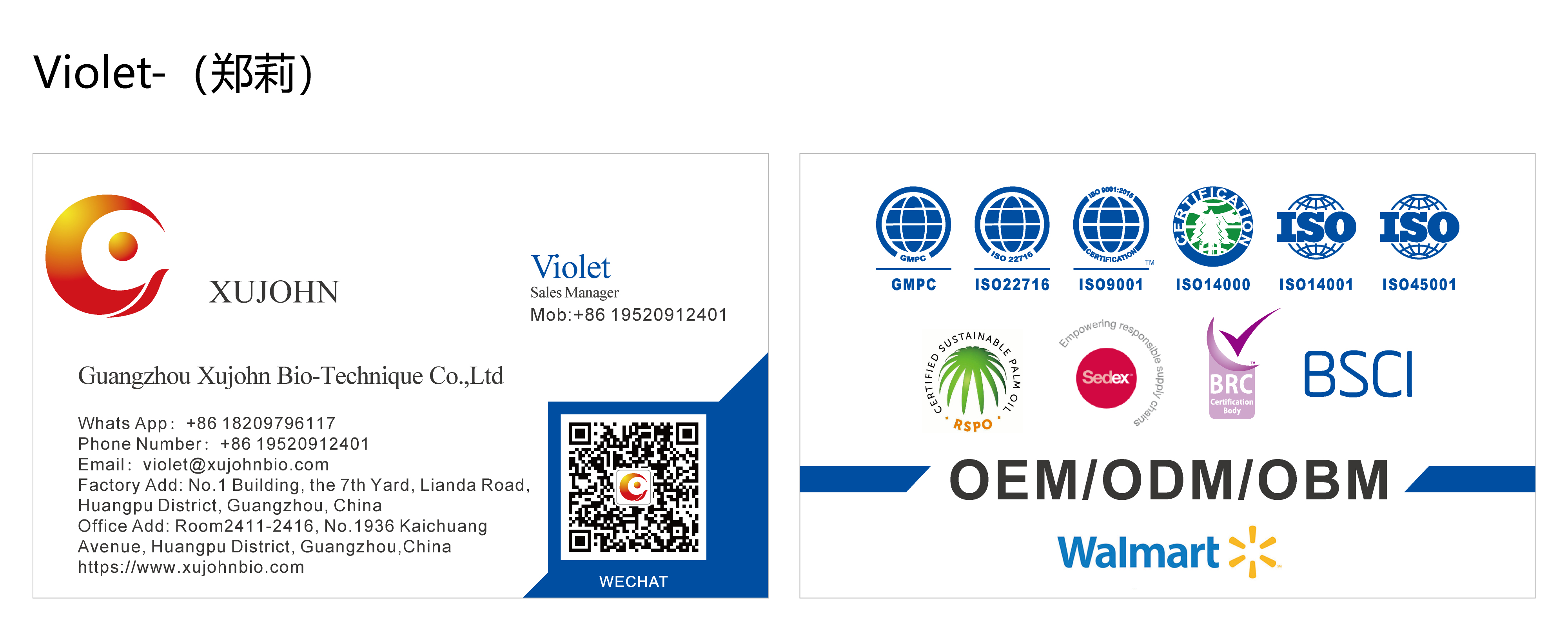
by "Menace Lutz" <lutzmenace@gmail.com> - 07:41 - 9 May 2025 -
Can US utilities meet surging demand for energy?
On McKinsey Perspectives
A new era for energy Brought to you by Alex Panas, global leader of industries, & Axel Karlsson, global leader of functional practices and growth platforms
Welcome to the latest edition of Only McKinsey Perspectives. We hope you find our insights useful. Let us know what you think at Alex_Panas@McKinsey.com and Axel_Karlsson@McKinsey.com.
—Alex and Axel
•
Power up. The US stands at the threshold of a new era for energy demand that will both challenge the system and create opportunities for growth and innovation. Over the past four years, rising demand—primarily from reindustrialization, an AI-driven boom in data centers, and accelerating electrification—has reshaped the industry. This has sparked the first sustained load growth in nearly two decades. US power demand is projected to rise by more than 3% annually through 2040, McKinsey Senior Partners Adam Barth and Humayun Tai and their coauthors say.
•
Tackling the issues. The US energy sector must address six key issues, including potential supply shortages, to meet rising demand. One way to do so is through technology investment. While existing technologies—such as demand response programs, energy efficiency programs, and front-of-the-meter storage—can improve the grid considerably, they aren’t being deployed at scale. Consider three solutions to help energy sector leaders address critical challenges, and explore the full collection, America at 250, to gain more insights as the country nears a milestone birthday.
—Edited by Belinda Yu, editor, Atlanta
This email contains information about McKinsey's research, insights, services, or events. By opening our emails or clicking on links, you agree to our use of cookies and web tracking technology. For more information on how we use and protect your information, please review our privacy policy.
You received this email because you subscribed to the Only McKinsey Perspectives newsletter, formerly known as Only McKinsey.
Copyright © 2025 | McKinsey & Company, 3 World Trade Center, 175 Greenwich Street, New York, NY 10007
by "Only McKinsey Perspectives" <publishing@email.mckinsey.com> - 01:24 - 9 May 2025





